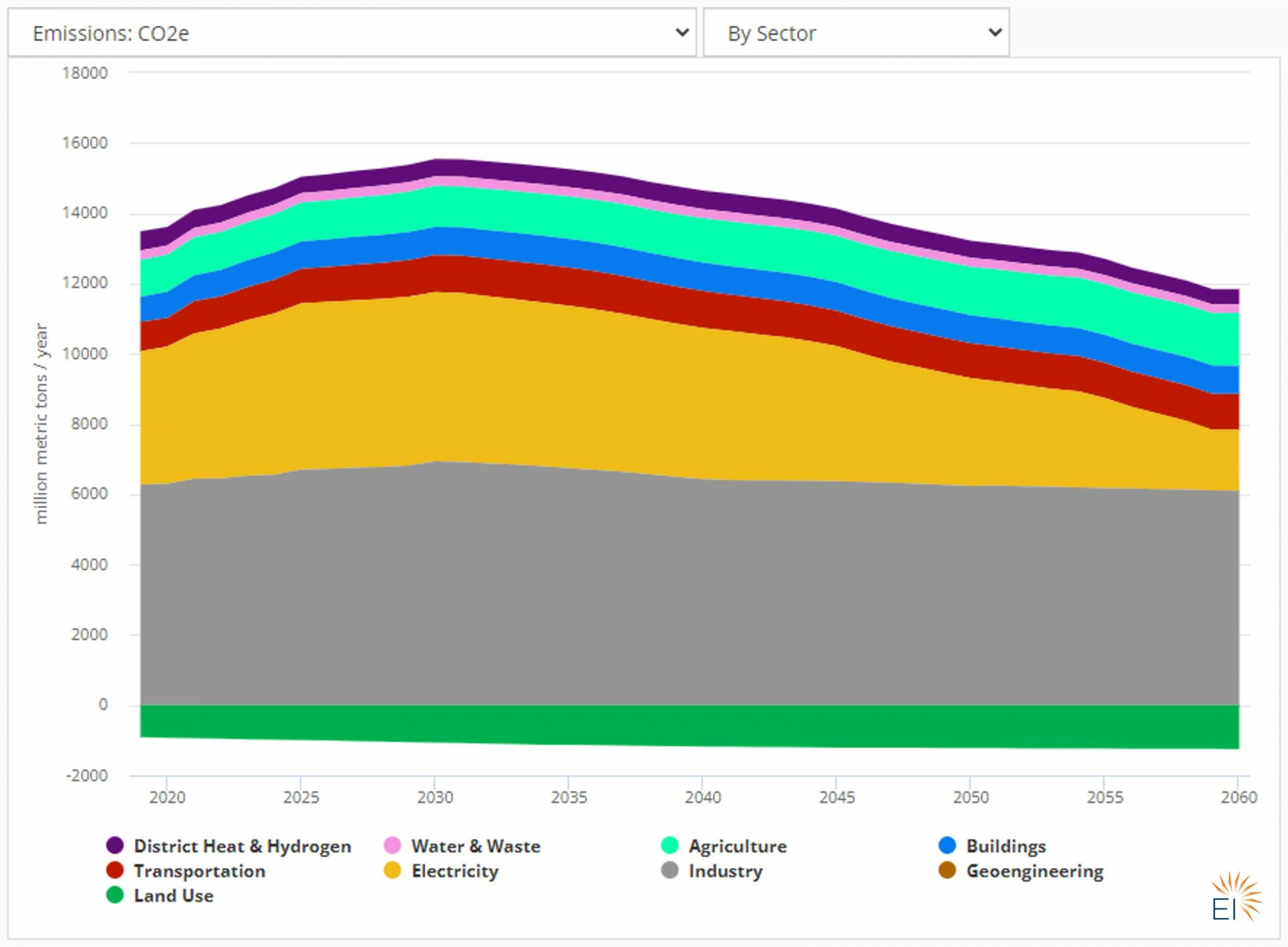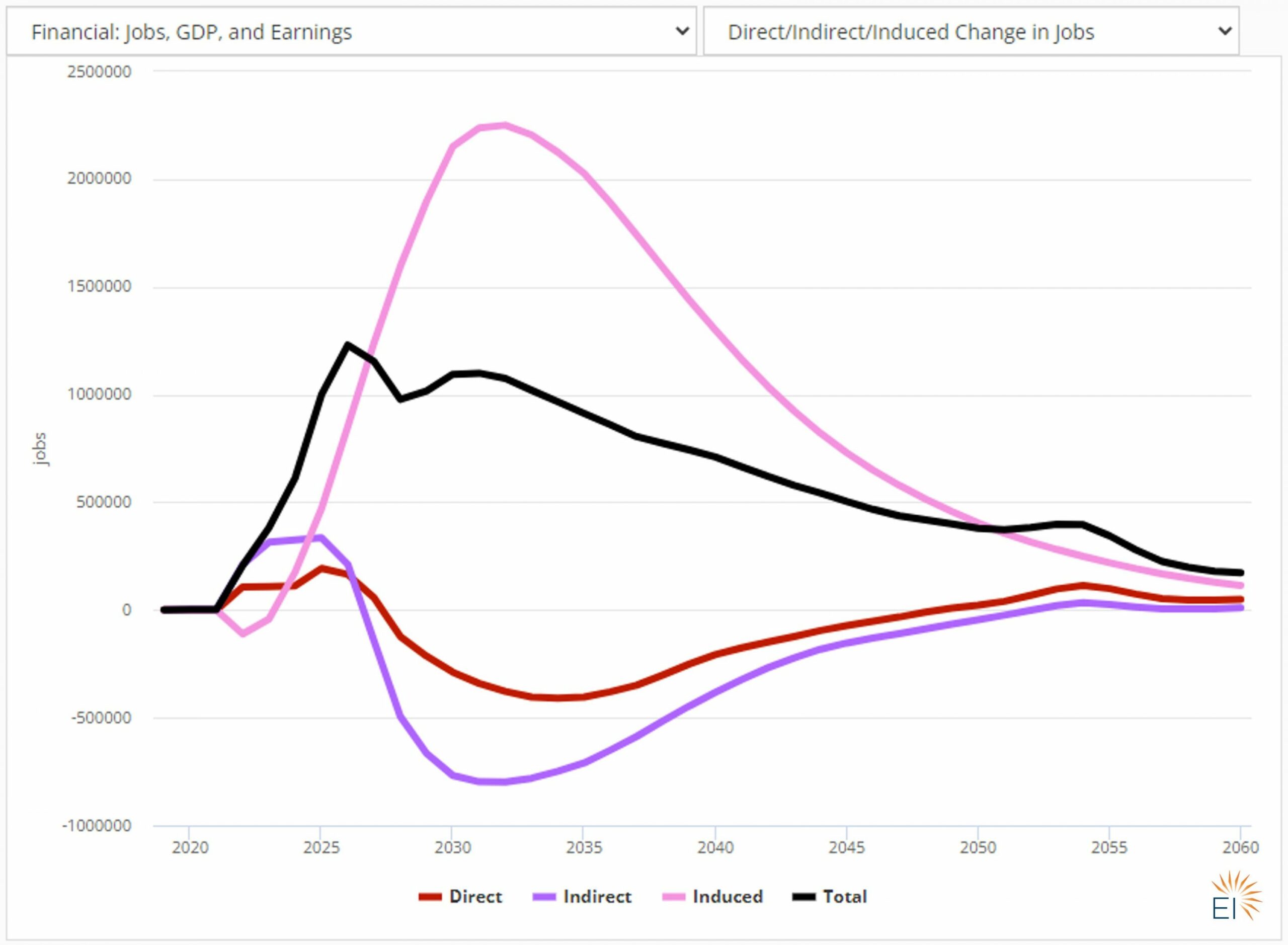By Minshu Deng
This week, Energy Innovation Policy and Technology LLC® and the Innovative Green Development Program (iGDP) released the latest China Energy Policy Simulator (EPS), an open-souce and peer-reviewed model that estimates the environmental, economic, and public health impacts of hundreds of climate and energy policies up to 2060.
This EPS includes an updated Business-As-Usual (BAU) Scenario showing the emissions trajectory under current policies, based on comprehensive updates to input data from publicly available sources, including China’s Statistical Yearbooks and Tsinghua University research. The BAU Scenario shows economy-wide greenhouse gas (GHG) emissions peaking around 2030. Policymakers and other stakeholders can use the EPS to identify additional policies to achieve early peaking and reach carbon neutrality by 2060.

In addition to data updates, the EPS is built on version 3.4.2, which offers many new features that improve users’ ability to predict how different policy options can reduce GHG emissions and other pollutants, create jobs, boost the economy, and achieve goals like China’s dual carbon targets. New features since the last release of a China EPS on version 1.2 are highlighted below, and a full list of changes are available in the Version History.
The updated EPS includes a new macroeconomic analysis module added in version 3.0. New output metrics include the change in gross domestic product, jobs, and employee compensation. Earlier versions of the EPS only calculated direct cash flow changes caused by a policy package, but this new macroeconomic module can also account for how money is re-spent across the economy. As a result, the EPS can calculate energy use and emissions associated with resulting indirect and induced economic activity.

The release also improves the China EPS industry module. In version 3.2, the module became more detailed, increasing the number of industries broken out from eight to 25. With version 3.4, fuel shifting within each of these 25 industry categories can be further divided between processes using low-temperature heat (up to 165°C/330°F) and those requiring medium-to-high temperatures (above 165°C/330°F). This distinction better captures how industrial heat pumps can efficiently and affordably reduce emissions in industries that primarily require low-temperature heat (e.g., food and beverage processing).

Finally, versions from 3.4 onward can now calculate policy effects on international trade of nonenergy goods. This allows users to see how policies affect the production, export, import, and domestic consumption of many goods.
All of these new features are now available online, and a full list of changes made since the last publicly released China EPS can be found on the Version History page. The EPS Video Series provides an introduction to the model’s capabilities, and users can explore the tool using the EPS web interface.